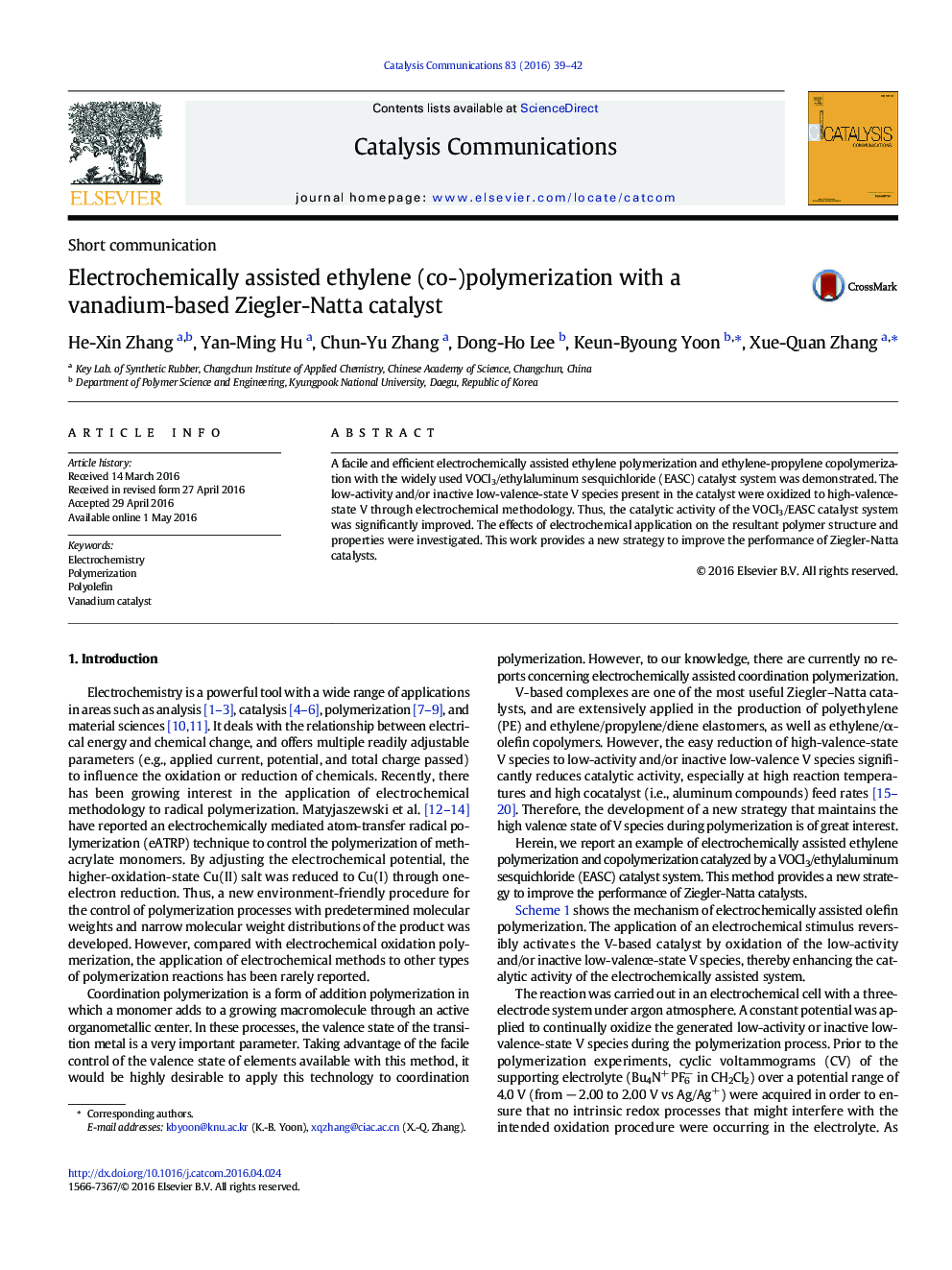| Article ID | Journal | Published Year | Pages | File Type |
|---|---|---|---|---|
| 49689 | Catalysis Communications | 2016 | 4 Pages |
•The activity of VOCl3 was improved with the electrochemical application.•Oxidation state of VOCl3 could be controlled by electrochemical method.•The polymerization mechanism does not change with the application of potential.
A facile and efficient electrochemically assisted ethylene polymerization and ethylene-propylene copolymerization with the widely used VOCl3/ethylaluminum sesquichloride (EASC) catalyst system was demonstrated. The low-activity and/or inactive low-valence-state V species present in the catalyst were oxidized to high-valence-state V through electrochemical methodology. Thus, the catalytic activity of the VOCl3/EASC catalyst system was significantly improved. The effects of electrochemical application on the resultant polymer structure and properties were investigated. This work provides a new strategy to improve the performance of Ziegler-Natta catalysts.
Graphical abstractFigure optionsDownload full-size imageDownload as PowerPoint slide
